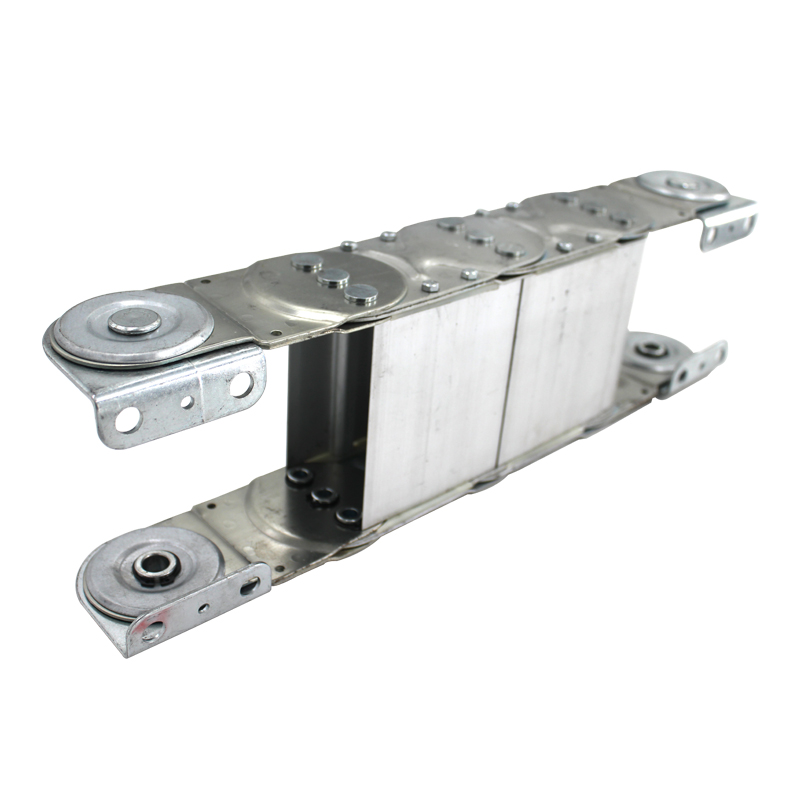hydraulic hose drag chain
Understanding Hydraulic Hose Drag Chains
Hydraulic systems play a critical role in a wide range of industries, from manufacturing to automotive engineering. At the heart of these systems are hydraulic hoses, which transport hydraulic fluid to various components. However, the management of these hoses can pose significant challenges, especially when it comes to mobility and organization. This is where hydraulic hose drag chains come into play.
What is a Hydraulic Hose Drag Chain?
A hydraulic hose drag chain, also known as a cable carrier or energy chain, is a mechanical device designed to guide and protect flexible hoses and cables in motion. They provide a structured pathway for hydraulic hoses to move along without tangling or becoming damaged, ensuring the efficient operation of hydraulic systems.
These chains are typically composed of interconnected links that form a flexible and enclosed track. They can be mounted on machinery, allowing hoses to slide smoothly as equipment moves or operates. The design of the drag chain minimizes wear on the hoses and helps maintain the integrity of the hydraulic system.
Benefits of Using Hydraulic Hose Drag Chains
1. Protection from Mechanical Damage One of the primary benefits of using a drag chain is that it protects hydraulic hoses from abrasions, cuts, and other mechanical damage. In environments where equipment is subject to frequent movement, hoses can become pinched or scratched, leading to potential system failures. A drag chain helps mitigate these risks.
2. Improved Mobility Hydraulic systems often operate in environments where there is a lot of movement. Drag chains allow hoses to move smoothly in conjunction with machinery, reducing tension and stress on the hoses. This is particularly important in dynamic applications such as robotic arms, cranes, and CNC machines.
3. Enhanced Organization In complex machinery, multiple hoses and cables can easily become tangled or disorganized. Drag chains provide a dedicated pathway for hydraulic hoses, improving organization and making maintenance easier. This clarity not only reduces downtime but also enhances safety by minimizing the risk of accidental disconnections.
4. Versatility Hydraulic hose drag chains are incredibly versatile and can be customized to meet specific application requirements. They come in various sizes, shapes, and materials to accommodate different environments—from light-duty applications to heavy industrial settings. This adaptability allows manufacturers to choose the right chain for their specific needs.
hydraulic hose drag chain

5. Reduced Noise Levels Hoses that move freely without a drag chain can create noise due to friction or impact with other surfaces. Drag chains can help dampen this noise, contributing to a quieter workplace. This reduction in noise pollution can improve working conditions and the overall environment for operators.
Choosing the Right Hydraulic Hose Drag Chain
Selecting the appropriate drag chain requires careful consideration of several factors
- Size and Length The size of the drag chain should correspond to the dimensions of the hoses it will carry. The length should be sufficient to accommodate the range of motion of the equipment, ensuring that hoses are neither too tight nor too loose.
- Material Drag chains can be made from various materials, including plastic, metal, and composite materials. The choice of material will depend on factors such as weight, strength, and environmental conditions (e.g., exposure to chemicals or extreme temperatures).
- Number of Links The number of links in the chain determines its flexibility and load capacity. It is essential to assess the specific needs of the application to avoid underestimating or overloading the drag chain.
- Mounting Options Consider the mounting options available for the drag chain. Different configurations might be more suitable for specific machines or setups.
Conclusion
Hydraulic hose drag chains are an essential component in ensuring the longevity and efficiency of hydraulic systems. By providing protection, improving mobility, and enhancing organization, they can prevent costly downtime and maintain optimal performance. As industries continue to evolve, the importance of properly managing hydraulic hoses using drag chains will undoubtedly remain a pivotal aspect of hydraulic system design and operation. Investing in the right drag chain solution can lead to significant benefits in both performance and durability, ultimately contributing to the success of hydraulic operations across various industries.








